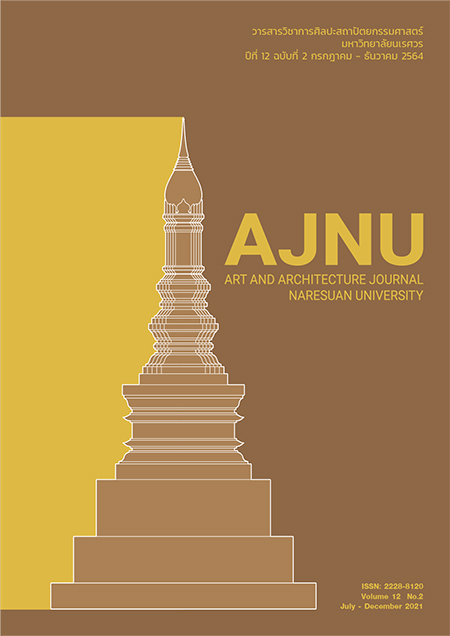Study of grain patterns of wicker basketry Mae Rim and Sankampaeng fabrics for application in developing bags of vetiver according to Sufficiency Economy Philosophy
Main Article Content
Abstract
The research objective.1) study the original pattern of vetiver grass basketry and San Kamphang’s Sarong 2) design and develop bag products from vetiver grass and San Kamphang’s Sarong 3) evaluate customers’ opinion about new bag designs made from vetiver grass and San Kamphang’s Sarong which developed by this research. Research population were members in Fak Luang Group Moo 4 Kee Lek sub-district of Mea Rim district Chiang Mai province, the sample group were selected and separated into three groups 1) three information providers about rice grain pattern of vetiver grass basketry and San Kamphang’s Sarong 2) three experts in rice grain pattern of vetiver grass basketry and San Kamphang’s Sarong 3) one hundred targeting customers for satisfaction evaluation. Research tools were semi-structured interview form, vetiver grass basketry and San Kamphang’s Sarong evaluation form, evaluation form about design and development. The data were analyzed into percentage, average, standard deviation and the qualitative information came from content analysis. Research result: this research found that the original product forms which made from San Kamphang’s Sarong were 1) Sarong 2) dolls 3) pillows 4) in-house slippers and which made from vetiver grass were 1) hats 2) baskets 3) bags. There were two patterns of vetiver grass product which were rice grain and melon seed, while the uniqueness of San Kamphang’s Sarong was its colorful hand woven in layers pattern and special form. This research focused on designing and developing several sizes of bag based on community’s idea, then using computer programto create two- and three-dimensions product forms which were evaluated by three experts. The evaluation score for applying patterns from both products equal 4.75 which is in the highest level. From the evaluation form focusing on the acceptable of one hundred customers shown that in beauty aspect the average score was 4.55 which is in the highest acceptable levelIn conclusion, the designed and developed bag products from of vetiver grass and San Kamphang’s Sarong from this research added value to the products under creative economy concept as research specified criteria and customers’ suggestion.
Article Details
References
พีรียา พงษ์สาริกัน. (2560). หญ้าแฝก : The Vetiver Grass Project .กรุงเทพฯ: สถาพรบุ๊คส์.
รจนา จันทราสาและคณะ. (2553). การพัฒนารูปแบบผลิตภัณฑ์หัตถกรรมจากใบหญ้าแฝก. รายงานการวิจัยมหาวิทยาลัยราชภัฏสวนสุนันทา.
วิบูลย์ ลี้สุวรรณ. (2532). เครื่องจักสานในประเทศไทย. กรุงเทพฯ, โอเดียนสโตร์.


